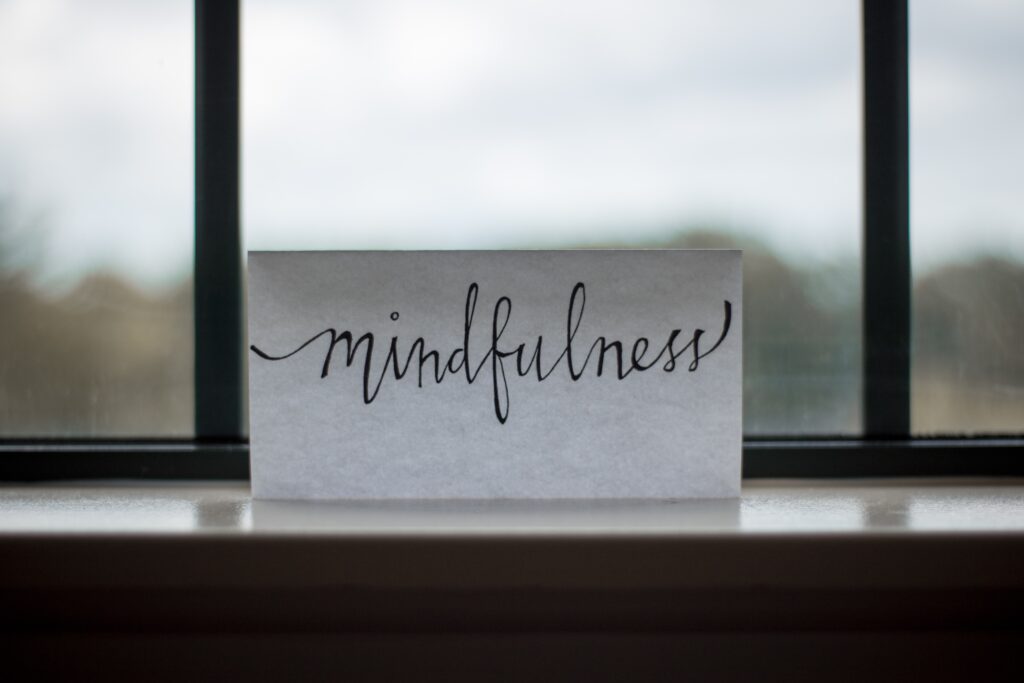
Meditation and mindfulness: the key to finding peace and joy.
Table of Contents
For most of us, when we hear the words meditation and mindfulness we think, “uh no thanks.” Or “I don’t have time to just sit and do nothing.” Or maybe “I spend all day trying to avoid my thoughts, why would I voluntarily sit with them?”

I too am at fault for not taking the time to meditate or practice mindfulness. I get caught up in the busyness of life, then hours later I realize I was on autopilot not really paying attention to what I was doing. I am also guilty of the excuse “I don’t have time to sit and do nothing.” I recently heard a story that resonated with me and has me rethinking the need to prioritize meditation and mindfulness.
An ancient Hindu legend wrote, the gods were trying to find a place to hide the secret to peace and joy. They didn’t want humans to find it until they could appreciate it. One said to hide it on the highest mountain, but they decided that would be too easy. Another one suggested to hide it in the deepest part of a forest, but it was rejected for the same reason. Several others offered suggestions, but they rejected they for the same reason. The wisest one said to hide it in the human heart, because that’s the last place they will look.
I don’t believe in Hindu gods, but it struck me because often we look towards external things to find peace and joy. We have peace and joy inside us, we just must look for it. That is where meditation and mindfulness come into play.
Are meditation and mindfulness the same?
They have several similarities, but they are not exactly the same.

Meditation is more like an exercise. You take time out of your day, anywhere from 5 minutes to 30 minutes, and you sit and focus on the mind-body connection. There are several different apps for your phone that provide guided meditations, you could just sit and focus on your slowing breaths, recite a mantra, or simply sit in silence and watch your thoughts come and go.
Mindfulness is more of a tool that you can use throughout the day with any task. Mindfulness is type of meditation by focusing on the present moment through your normal daily tasks. It is not jumping into autopilot and running away with your thoughts while cleaning the house. Mindfulness looks like you focusing on cleaning or the awareness of your footsteps while on a walk. It is fully experiencing the moment of coloring with your kids instead of thinking about the long to-do list of chores or what you are going to make for dinner.
What is the purpose of meditation and mindfulness?

Meditation and mindfulness focus on the mind-body connection. The goal is to shift into present day awareness of thoughts and body sensations without passing judgement. I repeat, without passing judgement. It’s about learning what is happening inside and simply acknowledging it for what it is. No need to analyze or assess why you had that thought or why you are feeling a certain way. It is simply gaining the understanding of what is happening.
The benefits of meditation and mindfulness.
Regular practice of meditation and mindfulness can help reduce levels of stress, anxiety, and depression. Several studies have shown that meditation and mindfulness can help with pain management and pain reduction. A study from 2019 found that meditation could help with sleep problems. Several studies show promising results that meditation and mindfulness help with substance use disorders, increasing awareness around thoughts, feelings, cravings, and help prevent relapse. Studies have also found that meditation can help alleviate symptoms of PTSD. You can read more here if you are interested in the research studies behind these findings.
It can be difficult to initiate practicing mindfulness and meditation. But, once you learn it, practice it, and integrate it into your daily routine, it will be one of the most useful tools you have.
